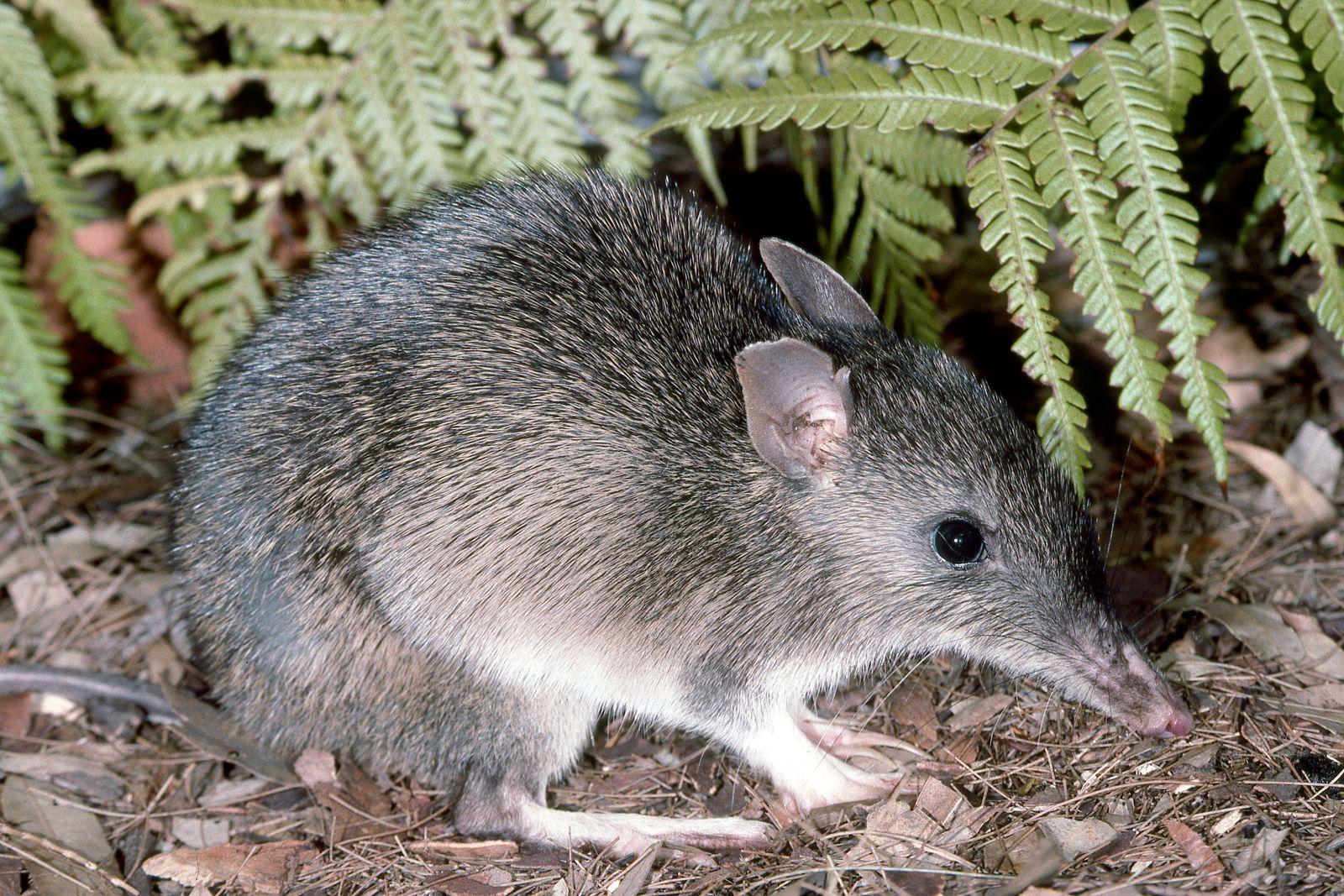21 Fascinating Marsupials You Should Know

Have you ever wondered about those unique animals that carry their babies in pouches?
Welcome to the fascinating world of marsupials!
These special creatures are found mainly in Australia and the Americas, unlike other animals on Earth.
In this post, we’re going to explore 21 different types of marsupials.
Some might be familiar to you, while others might be completely new.
Get ready to meet some of nature’s most interesting animals!
Let’s jump right in and discover these pouch-bearing wonders together.
Different Types of Marsupials Worldwide
1. Kangaroo

Kangaroos are large marsupials native to Australia, known for their powerful hind legs and large tails.
They are strong jumpers, capable of covering great distances in a single bound.
Kangaroos are herbivores that graze on grass and shrubs.
They are known for their pouches, where females carry and nurture their young, called joeys.
| Characteristic | Details |
|---|---|
| Habitat | Grasslands, forests, savannas |
| Diet | Grass, leaves, shrubs |
| Notable Feature | Large hind legs, pouch for carrying young |
2. Koala

Koalas are tree-dwelling marsupials found in eucalyptus forests in Australia.
Known for their fluffy ears and cute appearance, koalas spend most of their time in trees, feeding on eucalyptus leaves.
Despite their appearance, they are not bears and carry their young in a pouch, just like other marsupials.
| Characteristic | Details |
|---|---|
| Habitat | Eucalyptus forests |
| Diet | Eucalyptus leaves |
| Notable Feature | Pouch and tree-dwelling habits |
3. Wallaby

Wallabies are small to medium-sized marsupials similar in appearance to kangaroos but smaller.
They live in forests, grasslands, and rocky areas in Australia and nearby islands.
Wallabies are herbivores, feeding on grasses and plants and carrying their young in pouches.
| Characteristic | Details |
|---|---|
| Habitat | Forests, grasslands, rocky areas |
| Diet | Grasses, leaves, plants |
| Notable Feature | Smaller size, strong hind legs |
4. Opossum

Opossums are the only marsupials found in North America.
They are omnivorous and highly adaptable, living in various habitats, including forests, urban areas, and farmlands.
Opossums have a prehensile tail and are known for their ability to “play dead” when threatened.
| Characteristic | Details |
|---|---|
| Habitat | Forests, urban areas, farmlands |
| Diet | Fruits, insects, small animals |
| Notable Feature | Prehensile tail, playing dead |
5. Tasmanian Devil

The Tasmanian Devil is a carnivorous marsupial found only on the island of Tasmania.
It is known for its loud screeches, sharp teeth, and powerful jaws.
Tasmanian Devils feed on small animals and carrion; like other marsupials, they carry their young in a pouch.
| Characteristic | Details |
|---|---|
| Habitat | Forests, coastal scrublands |
| Diet | Small animals, carrion |
| Notable Feature | Sharp teeth, powerful jaws |
6. Sugar Glider

Sugar Gliders are small, tree-dwelling marsupials native to Australia.
They are known for gliding between trees using a membrane that stretches from their wrists to their ankles.
They are nocturnal and feed on sap, nectar, and insects.
Sugar Gliders are social animals and live in groups.
| Characteristic | Details |
|---|---|
| Habitat | Forests, woodlands |
| Diet | Nectar, sap, insects |
| Notable Feature | Ability to glide between trees |
7. Wombat

Wombats are burrowing marsupials native to Australia.
They are recognized for their stout bodies and strong claws.
They dig extensive burrow systems and are herbivores, feeding on grasses, roots, and bark.
Wombats carry their young in a backward-facing pouch to protect them while digging.
| Characteristic | Details |
|---|---|
| Habitat | Forests, grasslands, mountainous regions |
| Diet | Grasses, roots, bark |
| Notable Feature | Backward-facing pouch, burrowing |
8. Quokka

Quokkas are small, herbivorous marsupials found on a few islands off the coast of Western Australia.
Known for their friendly and curious nature, quokkas are often called the “happiest animals” due to their seemingly smiling faces.
They are primarily nocturnal and feed on grasses and leaves.
| Characteristic | Details |
|---|---|
| Habitat | Islands off Western Australia |
| Diet | Grasses, leaves |
| Notable Feature | Friendly nature, nocturnal behavior |
9. Bandicoot

Bandicoots are small, nocturnal marsupials native to Australia and nearby islands.
They have a pointed snout and long hind legs, allowing them to hop like rabbits.
Bandicoots are omnivores, feeding on insects, small animals, and plants.
They play an important role in controlling insect populations.
| Characteristic | Details |
|---|---|
| Habitat | Forests, grasslands, urban areas |
| Diet | Insects, small animals, plants |
| Notable Feature | Pointed snout, hopping movement |
10. Numbat

Numbats are small, termite-eating marsupials native to Western Australia.
They are diurnal, making them one of the few marsupials active during the day.
Numbats have a long, sticky tongue used to catch termites.
They are characterized by their reddish-brown fur with white stripes along their backs.
| Characteristic | Details |
|---|---|
| Habitat | Woodlands, eucalyptus forests |
| Diet | Termites |
| Notable Feature | Striped back, long tongue for catching termites |
11. Bilby

Bilbies are small, nocturnal marsupials native to Australia, recognized for their long ears and burrowing habits.
They are omnivores, feeding on seeds, fruit, insects, and small animals.
Bilbies are skilled diggers, creating extensive burrow systems to escape predators and the harsh desert environment.
| Characteristic | Details |
|---|---|
| Habitat | Deserts, grasslands |
| Diet | Seeds, fruits, insects |
| Notable Feature | Long ears, burrowing skills |
12. Pademelon

Pademelons are small, shy marsupials similar to wallabies but smaller in size.
They are native to Australia and New Guinea and live in forested regions.
Pademelons are herbivores, feeding on leaves, grasses, and fruits.
They are known for their hopping movement and reclusive nature.
| Characteristic | Details |
|---|---|
| Habitat | Forests, coastal scrublands |
| Diet | Leaves, grasses, fruits |
| Notable Feature | Hopping movement, small size |
13. Quoll

Quolls are carnivorous marsupials native to Australia and New Guinea.
They are nocturnal hunters, preying on small animals, birds, and insects.
Quolls are known for their spotted fur and sharp claws, which help them hunt and climb.
They play an important role as natural pest controllers.
| Characteristic | Details |
|---|---|
| Habitat | Forests, woodlands, grasslands |
| Diet | Small animals, birds, insects |
| Notable Feature | Spotted fur, sharp claws |
14. Dunnart

Dunnarts are small, insect-eating marsupials found in Australia.
They resemble mice in appearance but belong to the marsupial family.
Dunnarts are nocturnal and highly active hunters, feeding on insects and small invertebrates.
Despite their small size, they are efficient predators in their ecosystems.
| Characteristic | Details |
|---|---|
| Habitat | Deserts, forests, grasslands |
| Diet | Insects, small invertebrates |
| Notable Feature | Mouse-like appearance, active hunter |
15. Antechinus

Antechinus are small, carnivorous marsupials native to Australia.
They are known for their short, intense breeding season, during which males die after mating.
Antechinus feed on insects, spiders, and small vertebrates.
They are agile hunters, often climbing trees in search of food.
| Characteristic | Details |
|---|---|
| Habitat | Forests, woodlands |
| Diet | Insects, spiders, small vertebrates |
| Notable Feature | Intense breeding season, agile climbers |
16. Tree Kangaroo

Tree Kangaroos are arboreal marsupials found in the rainforests of Australia and New Guinea.
Unlike their ground-dwelling relatives, tree kangaroos are adept climbers.
They use their strong forelimbs and long tails for balance.
They feed on leaves, fruits, and flowers, and spend most of their lives in the trees.
| Characteristic | Details |
|---|---|
| Habitat | Rainforests |
| Diet | Leaves, fruits, flowers |
| Notable Feature | Strong climbers, arboreal lifestyle |
17. Eastern Barred Bandicoot

The Eastern Barred Bandicoot is a small, nocturnal marsupial native to Tasmania and mainland Australia.
They are easily recognized by the pale stripes on their lower back.
These bandicoots are omnivorous, feeding on insects, worms, and plant material, and play a vital role in aerating soil while foraging.
| Characteristic | Details |
|---|---|
| Habitat | Grasslands, woodlands |
| Diet | Insects, worms, plant material |
| Notable Feature | Striped back, soil aeration |
18. Greater Glider

The Greater Glider is a nocturnal, tree-dwelling marsupial found in eastern Australia.
As its name suggests, it can glide between trees using a membrane that stretches from its elbows to its ankles.
This herbivorous glider feeds mainly on eucalyptus leaves and is known for its large size compared to other gliding marsupials.
| Characteristic | Details |
|---|---|
| Habitat | Eucalyptus forests |
| Diet | Eucalyptus leaves |
| Notable Feature | Gliding ability, large size |
19. Common Brushtail Possum

The Common Brushtail Possum is one of Australia’s most widespread marsupials.
It is a nocturnal, tree-dwelling animal that feeds on leaves, fruits, and flowers.
They are known for their adaptability to urban environments and are often seen in gardens and rooftops in cities.
| Characteristic | Details |
|---|---|
| Habitat | Forests, urban areas |
| Diet | Leaves, fruits, flowers |
| Notable Feature | Adaptability to urban environments |
20. Long-nosed Potoroo

The Long-nosed Potoroo is a small, ground-dwelling marsupial found in southeastern Australia.
It has a long snout and strong hind legs for digging and foraging.
Potoroo primarily feeds on fungi, roots, and other plant material, and plays a crucial role in dispersing fungal spores that help maintain healthy ecosystems.
| Characteristic | Details |
|---|---|
| Habitat | Forests, shrublands |
| Diet | Fungi, roots, plant material |
| Notable Feature | Long snout, important for fungal spore dispersal |
21. Yellow-footed Rock Wallaby

The Yellow-footed Rock Wallaby is a small, agile marsupial native to the rocky outcrops of southern Australia.
They are known for their strong hind legs and ability to leap across steep, rocky terrain.
Their distinctive yellow-colored feet and tail give them their name.
Yellow-footed Rock Wallabies are herbivores that feed on grasses and leaves.
| Characteristic | Details |
|---|---|
| Habitat | Rocky outcrops, cliffs |
| Diet | Grasses, leaves |
| Notable Feature | Yellow feet, agility in rocky terrain |
Conclusion
Each marsupial we’ve examined has its own special features and way of life.
They remind us that there’s always something new to learn about the animals we share our planet with.
Marsupials aren’t just interesting to look at—they play important roles in their ecosystems, too.
Now it’s your turn! Which of these marsupials caught your eye? Maybe you want to find out more about one of them?
Or perhaps you’ve seen one of these animals in real life?
We’d love to hear your thoughts and experiences in the comments below.






